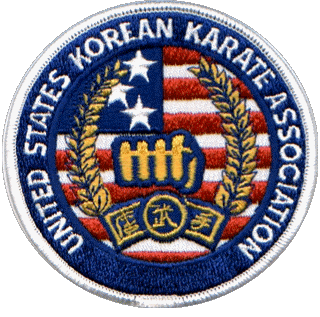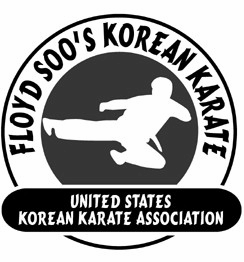 |
|||||||||||||||||||||||||||||||||||||||||||||
|
|
|||||||||||||||||||||||||||||||||||||||||||||
 |
|
Hyung (Forms) Tang Soo Do is an art of self defense, first and foremost. If you study the history of Martial Arts, you will find that they all came about due to self defense requirements. In keeping with this philosophy, when we practice Forms, we must first learn the actual pattern itself, envision the multiple opponents that we are defending against in the Form and then strive for perfection in the stances and movements. There are a handful of different "levels of detail" in each and every Form. When a beginner first learns Geicho Hyung Il Bu, the instructor and student are happy when the student simply remembers the Hyung from start to finish. However, when a Green Belt, Red Belt or Black Belt performs this same Form, there will be obvious differences in what is observed between the ranks! In fact, even among the Black Belts, there should be obvious differences in how the first Hyung is performed between the different Dan ranks. Through the use of Forms, students can perfect the ability to perform hand and foot combinations freely and without thought. This is fundamental in making the best use of one's body at all times. The practitioner performs a sequence of movements that simulate responses to many kinds of attacks from multiple imaginary opponents. It is also the controlling of one's space as the defender deals with attacks coming from many different directions. Hyungs consist of prearranged motions which encompass a variety of kicks, blocks and hand techniques; designed to increase the student's balance, coordination and agility. As an exercise, Hyungs increase endurance and conditions the mind, body and reflexes for the stresses encountered during Free Sparring. As the student advances in rank, the Forms become increasingly complex and yet each is unique having its own unity and purpose. If a Form is to be properly done, each technique must have crisp power, speed, rhythm, precision and breath control. Proficiency in Hyungs will require intense concentration and maximum physical effort. Students should master each Form before moving to the next. The practitioner who moves too fast and over reaches himself does a disservice to both himself and the art.
Names, History & Significance of our Hyungs (Forms) Geicho Hyung Il Bu – “Basic Form #1” “Giecho” means Basic. We know what “Hyung” means. These forms are the first to be taught to beginning students, and as such, utilize the most basic stance, block and punch in TSD. Each of the three Geicho Hyungs has 20 movements within. These forms were created by KJN Hwang Kee in 1947 in Seoul, S. Korea. Geicho Hyung E Bu - “Basic Form #2” (see above) Geicho Hyung Sahm Bu - “Basic Form #3” (see above) Pyung Ahn Cho Dan – “Peace and Confidence #1” – “Pyung” means peaceful, well balanced and calm; while “Ahn” means confident, comfortable and safe. Anyone mastering these forms can develop a feeling of “peace and confidence” in mind and body in any situation. Originally known as “Jae Nam,” and originating in the Hwa Nam area of China, these forms were reorganized in approx. 1870 by Mr. Idos (an Okinawan master) into (very near) the versions we know today; and is symbolized by the Turtle. 22 movements. Pyung Ahn E Dan - “Peace and Confidence #2” (see above) 29 movements. Pyung Ahn Sahm Dan - “Peace and Confidence #3” (see above) 27 movements. Pyung Ahn Sah Dan - “Peace and Confidence #4” (see above) 29 movements. Pyung Ahn O Dan - “Peace and Confidence #5” (see above) 28 movements. Bassai – Originally called ‘Pal Che,” with “Pal” meaning “the selection of the best choice,” as well as “fast;” and Che meaning “collect.” The 52 movements (including Choon Bee and Ba Ro) of this form came from the most popular movements of the So Rim Sa (a Southern Chinese temple) Kwon Bup style. This form is characterized by the many quick movements and the constantly changing stances and postures. This form was said to have been created in the mid-to-late 16th Century in the Ha Nam Region of Southern China and is symbolized by the Cobra. Nai Ahn Chi Cho Dan - “Warrior on Horseback #1,” or more popularly, “Inward Step Advance #1,” because the original name of this hyung was “Neh Bo Jin” “Neh” means inward. Look at O Sip Sah Bo and Jin Do to see what the other two words mean! Neh Bo refers to the foot position when standing in a proper Kee Mah Jaseh (Horse-ride Stance), i.e., toes inward; while “advancing” sideways. This form was created by Jang Song Kye in the 1100s (Song Dynasty) in Northern China and is symbolized by the Horse. Nai Ahn Chi E Dan - #2 “Warrior on Horseback,” 30 movements. Nai Ahn Chi Sahm Dan - #3 “Warrior on Horseback,” 38 movements. Jin Do – Originally called Jin Toe, where “Jin” means advance; “Toe” means retreat; or “Chinto,” which means quiet waves, a Chinese sailor’s name, who is said to have created this form 200 – 300 years ago. This form has 44 fast, strong movements that change direction quickly; in addition, there are one-legged stances utilized in several places in this form (possibly symbolizing a crane standing on a rock preparing to strike its victim). This form originated in the Ha Nam Region of Southern China and is symbolized by the White Crane. Sip Soo – “Ten Hands” (also known as Jit Dae) – “Sip” means Ten. We all know what Soo means. The implication of the name is that one who has mastered this form has the effectiveness of ten men. This is the only form in TSD that has no offensive movements, only blocks. The lesson here is that one must be able to use blocks as strikes. The 27 movements of this form are more suited for practitioners of larger stature. It is said that this form originated in the Ha Bak Region of Northern China and is symbolized by the Bear. Ro Hai – “Vision of a Crane” – This form is most noted for its one-legged stances and powerful movements that teach poise and grace. The 34 movements of this form is said to have come from the Ha Nam Region of Southern China, 200 – 300 years ago and is symbolized by the White Crane or Heron. Kong Son Kun – “Viewing the Sky/Sun” or “High Light Reflected” is the name of the Chinese military officer who created this form. This form has 67 movements, which simulates multiple attacks from many angles and also makes it a relatively long form. It is also one of the most popular forms in martial arts. This form is said to have originated in the Ha Nam Region of Southern China (where Kang Son Kun lived) and is symbolized by the Eagle. Sei Shan – “Thirteen Hands” – The name references the thirteen different movements in the form and the Sip Sam Seh (the Thirteen Influences). Due to Tai Chi Chuan aspects incorporated in this form, all steps glide close to the ground in half-circle movements. The 45 movements in this form is said to have originated in the Ha Buk Region of Northern China approx. 900 years ago during the Song Dynasty and is symbolized by the Praying Mantis. This is one of the oldest forms in TSD. Wang Shu – “Excellent or Incredible Arms” – This was the name of a Chinese Envoy who took White Crane Kung Fu to Okinawa in 1644. The 39 movements of this form are to be performed with great speed, even when lowering and raising the body. It is thought that Wang Shu was very skilled in hand techniques. This form originated in the Ha Nam Region of Southern China and is symbolized by a small wild Swallow our Sparrow. Ji On – “Ji” means to develop technique and human mental character; “On” means to build physical conditioning and ability in sparring. It is said that these two words together in the name of this form means “To love the sound of Shaolin or Temple Sound.” This form has 50 movements that are a combination of hard and soft techniques. This form is said to have originated in the Yong Nam Region of China, approx. 300 years ago and is symbolized by the Ram or Goat. O Sip Sah Bo – “Fifty-Four Steps” Look at the names of the Pyung Ahn Hyungs to see what “O” and “Sah” mean. Look at Sip Soo to see what “Sip” means. Bo means step(s). It should be clear that “O Sip Sah” means 54. This hyung has 77 movements in it and is one of the longest in traditional TSD. This form is said to have originated in Southern China approx. 400 years ago, and is symbolized by the Tiger. Chil Sung Il Ro thru Chil Ro – “Seven Stars” (Big Dipper) #1 thru #7 – Created by KJN Hwang Kee from approx. 1950 to 1970 in S. Korea. Introduced in August 1983 in the USA. – KJN Hwang named these forms after the 7 stars in the Big Dipper. KJN Hwang’s mother told him that she had a vision or dream about this constellation before he was born. Many of the movements come from the “Moo Yei Do Bo Tong Ji,” a Korean Martial Arts manual that was published in 1790. In addition, KJN also used movements from Tai Chi and Long Fist Boxing that he learned while in China. |
| [Home] [Master Floyd Soo] [Self Defense] [Club Information] [Art & Founder] [Tang Soo Do Info] [History] [Philosophy] [Club Rules] [Procedures] [Terminology] [Bowing & Respect] [General Etiquette] [Crest Symbolism] [Sounding Off] [Belt Ranks] [1 & 3 Steps] [Free Fighting] [Forms] [Uniform] [Current Events] [Photo Album 1] [Photo Album 2] [Photo Album 3] [Photo Album 4] [Photo Album 5] [Photo Album 6] [Photo Album 7] [Photo Album 8] [Photo Album 9] [Photo Album 10] [Photo Album 11] [Photo Album 2012] [Photo Album BB Test] [Of Interest] [Inspiration] [Testimonials] [Class Schedule] [Pontiac Class] [Goodies] [Members Only] [Contact us & Links] |
 |